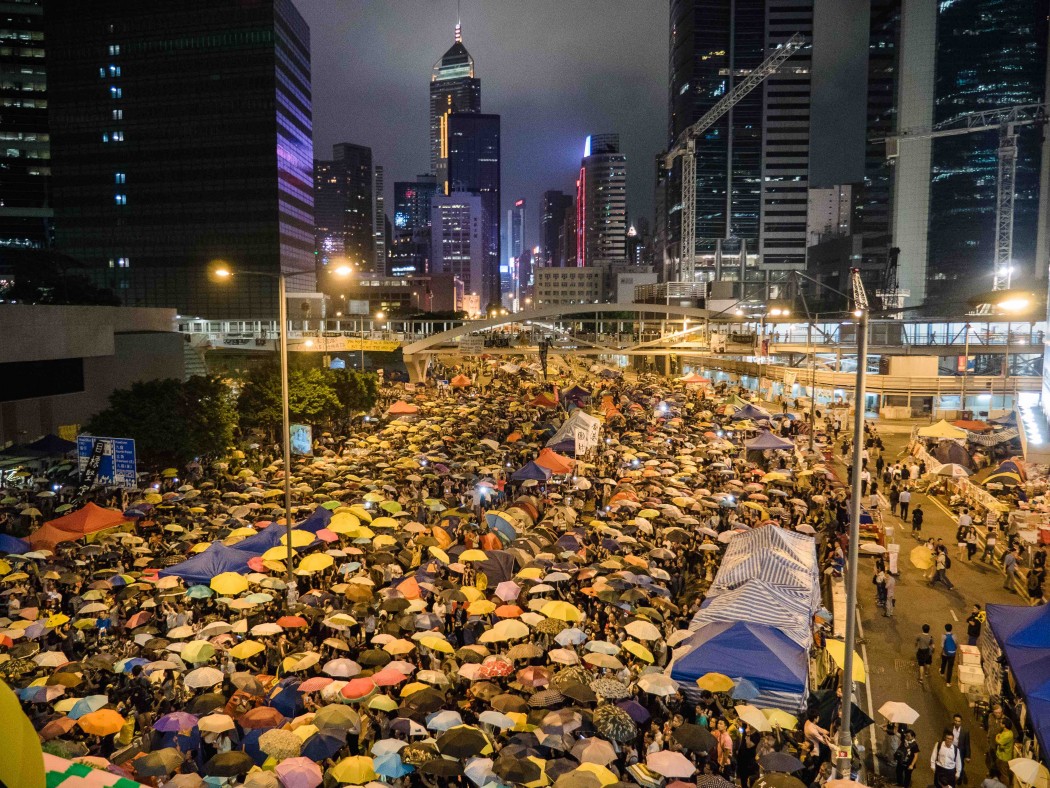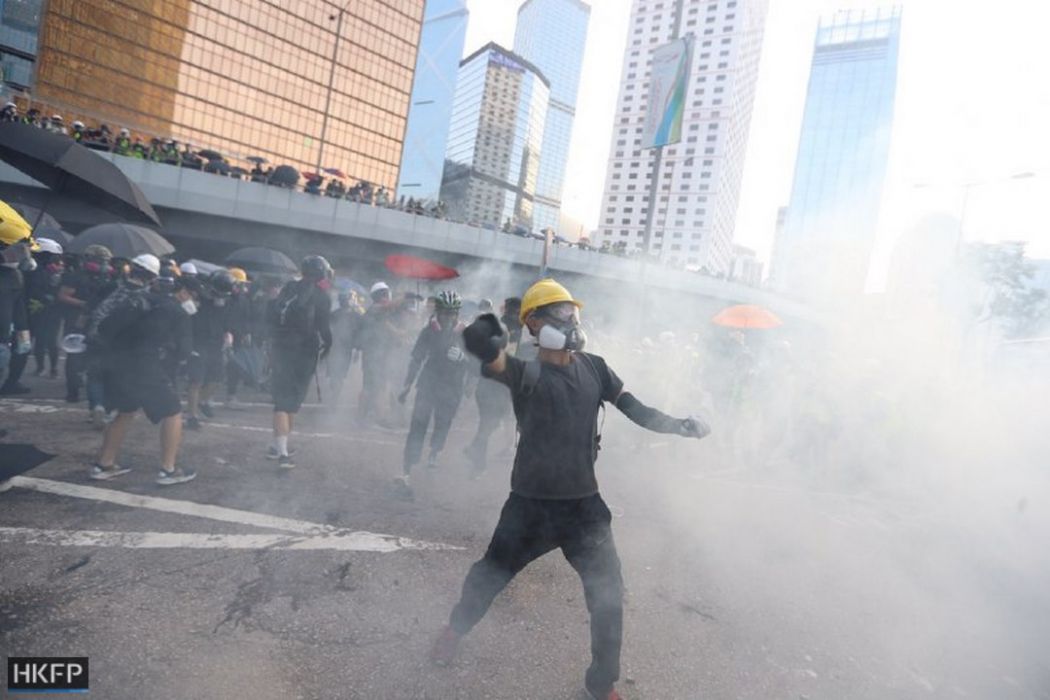By T-Fai Yeung
At the beginning of 2013, Benny Tai, an associate professor of law at the University of Hong Kong, proposed the Occupy Central with Love and Peace Movement, with reference to Martin Luther King’s civil rights activism and John Rawls’ theory of civil disobedience.
Some scholars and commentators have suggested that Occupy Central – which intended to occupy certain roads in Hong Kong as a means of expressing demands for true universal suffrage – was a type of indirect civil disobedience that was characteristically different from King’s direct civil disobedience.

But Hong Kong’s political situation in recent years has shown that – despite protests blossoming and civil society encouraging protesters to “fight on in their own ways” – it is difficult for either direct or indirect civil disobedience to remain as the city’s mainstream model of protest.
‘Love and hate’ replaces ‘love and peace’?
To put it briefly, adherents of civil disobedience can be divided into either principled or pragmatic factions.
The principled faction believes that protesters should still preserve principled nonviolence – “love and peace” – regardless of whether it can achieve the intended socio-political goals. However, as time wears on, it is very likely that protesters undergo a psychological transformation: from love and peace to a state in which love and hate are intertwined in a highly confrontational atmosphere.
This phenomenon first appeared in the middle-to-late stages of the 2014 Umbrella Movement in Hong Kong. It has become more prominent during the current protests against the amendment of the Fugitive Offenders Ordinance and the brutality of the Hong Kong Police Force (HKPF).

A salient example of this is that some pastors and Christians — motivated by Christian virtues of love and peace — visited the protest sites and tried to calm down the police and protesters by singing the Christian hymn “Sing Hallelujah to the Lord” in the early days of the protests. Unfortunately, the size of this group gradually diminished as the protests continued.
Instead, the new protest anthem “Glory to Hong Kong” highlights the feeling of resentment among the public as a result of authoritarian paternalism and state-sponsored violence. This suggests that the protests are no longer being sustained by the principle of “love and peace”.
Meanwhile, the pragmatic faction believes that non-violent civil disobedience is preferable, if only because it gains more support and sympathy from the public than violence. It is also more effective than legal or authorised protests in terms of exerting pressure on the government.
More specifically, pragmatic non-violent protesters emphasise the justifiability of civil disobedience as they have no choice but to escalate the use of illegal means to cry foul on unjust laws and public policy — especially when peaceful but authorised protests are no longer effective.

This pattern of illegal protest is still relatively restrained, given that the protagonists still insist on non-violence to some extent. Yet, when these advantages diminish, the pragmatic faction may not necessarily insist on maintaining the mode of illegal protests being nonviolent.
High legal cost with doubtful effects
The case of Occupy Central and the Umbrella Movement clearly illustrates that while the legal cost of conducting civil disobedience is much higher than that of legal demonstrations, it is not necessarily more effective in achieving specific political goals. The initial positive momentum of the Umbrella Movement was quite successfully undermined by the HKSAR government’s strategy of attrition. It thus gradually lost the public’s attention, and was unable to achieve any intended political goals.
Admittedly, some scholars and commentators believe that the Umbrella Movement was not a qualified civil disobedience campaign, since the design of the Occupy Central was not fully put into practice – especially given that protesters did not maintain discipline in being “non-violent” throughout the three months.
This may lead to the conclusion that civil disobedience is no longer a viable option in Hong Kong – even though this brings the city’s protesters into uncharted waters.

Compared with its approach to the Umbrella Movement, the HKPF have clearly shown less restraint in handling the protests against the amendment of the Fugitive Offenders Ordinance. In over three months, the HKPF have adopted a swift clearance strategy, which reflects their desire to confront protesters more aggressively.
At the same time, the HKPF’s strategy has completely obliterated the possibility of civil obedience, since it is now difficult for the protesters to maintain protests for a sufficient length of time through non-violent means. As a result, regardless of whether frontline protesters are trying to make an aggresive “breakthrough” — despite huge personal risks — they have tended to use violence more intensively in the ongoing protests.
Additionally, when the police have been widely accused of abusing their power – such as beatings, arrests, and detaining protesters and citizens arbitrarily with a retaliatory purpose – it is no surprise that frontline protesters despise the concept of civil disobedience, which emphasises that participants should surrender to the police and show their willingness to accept legal punishment.
It should also be noted that the Chinese Communist Party (CCP), led by Xi Jinping, has denounced civil disobedience as a coercive means to challenge the political legitimacy of the CCP and the HKSAR government from the very beginning. The CCP believes that making any fundamental concessions would only encourage protesters to ask for more.

Given the slim hope of achieving desirable political goals through civil disobedience, more dissidents have begun to sympathise with or even support the violent protesters. Those not willing to take legal risks have continued to participate only in so-called “peaceful, rational, and non-violent” protests.
For both types of protesters, civil disobedience is no longer the preferred option. Hence, it is becoming increasingly difficult for Hongkongers and civil society groups to hope that a civil disobedience campaign will receive serious attention in the foreseeable future.
In a nutshell, while it is beyond doubt that the HKSAR Chief Executive Carrie Lam and the HKPF are responsible for intensifying the clashes with frontline protesters, the increasing prevalence of violent resistance in Hong Kong can also be attributed to the CCP destroying the hopes of Occupy Central and the Umbrella Movement, in terms of striving for true universal suffrage.
The Chinese version of this article titled “公民抗命難再成為香港主流抗爭模式” was published in the Hong Kong Economic Journal (A17) on August 7, 2019. This version includes updated content, according to the changes in Hong Kong’s political situation. T-Fai Yeung is a research associate of the Department of Public Policy at City University of Hong Kong. He is also a blogger of Stand News, and has written for the Hong Kong Economic Journal and Ming Pao Daily News.
